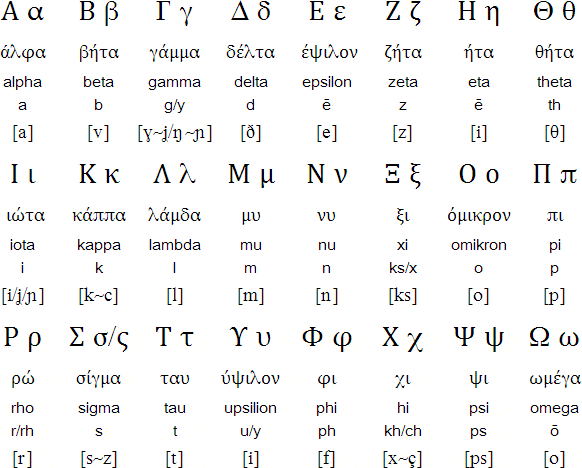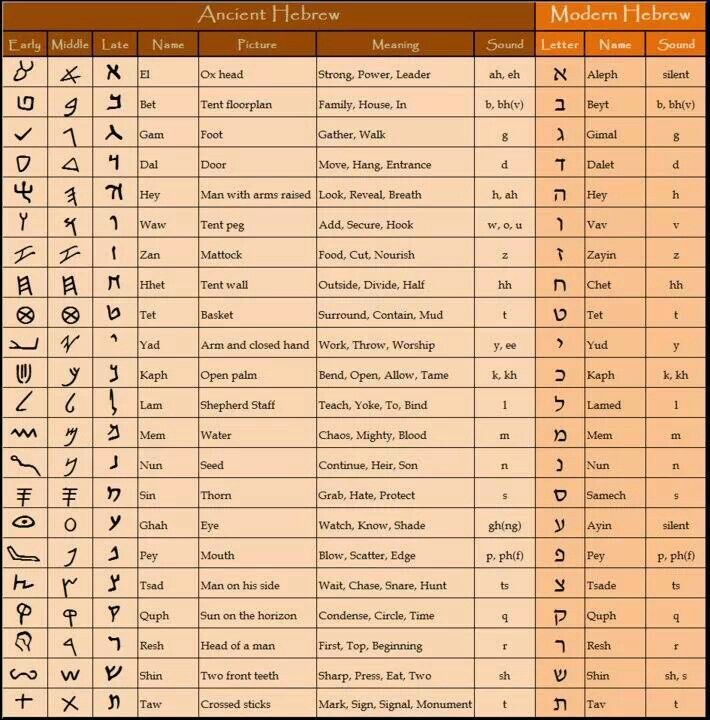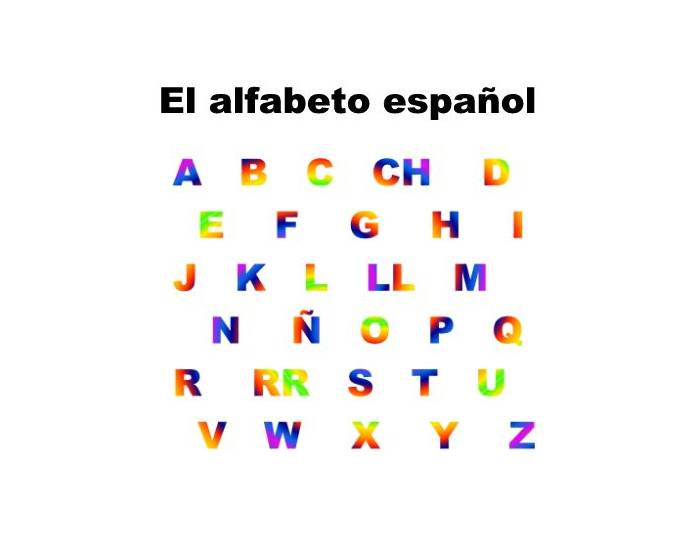

You probably never wondered where the word alphabet came from. Well, the answer is simple. It comes from the words for the first two letters of the Greek alphabet. Look at the first chart and you will notice that the first two letters are alpha and beta. Put them together and you have alphabeta. Drop the final a and you end up with alphabet. In Spanish, the ph becomes an f; the final a becomes an o and you and up with the world alfabeto.
But, the Greeks did not come up with their own alphabet. They got it from the Phoenicians. But, the Greeks were the first to have vowels included in their alphabet.
The earliest Hebrew alphabet Paleo-Hebrew is derived from a Proto-Canaanite alphabet as is the Phoenician alphabet. The Hebrew alphabet that we see today, with its square letters, comes from the time of the Babylonian exile. This actually means that most of the books of the Old Testament were originally written in a script that no longer exists. However, if you look at the Hebrew alphabet chart, then look at the second column from the left, you will see what Paleo-Hebrew letters looked like.
Ultimately, all alphabets in that area originated as pictograph types of alphabets. Egyptian hieroglyphs also originated as pictographs. So, in actuality, all languages that use the type of type that we see modern Western printing ultimately owe their original idea to the Egyptian pictograph/hieroglyph system of the alphabet. Note that over the long long history of Egypt there were four types of script developed, and I am not capable of explaining them.
Look at the Hebrew chart again. Look at the far left column. Does not the first letter, Aleph, look like a pictograph of a bull? The second column shows that the pictograph has become a symbol that maintains the memory of a bull. Ignore the third column as that is the alphabet inherited from the Babylonians during that Exile. Go to the Greek alphabet. Notice that the middle alpha in the Hebrew alphabet has been turned on its side and has become the A we now know. The third letter of the Hebrew alphabet, Gam, gets flipped to its mirror-image and becomes the Gamma of the Greek alphabet.
There is not a one to one concordance between the two alphabets, but one can see the developments that took place. As the alphabet was developed by different countries, the Latin (Roman) alphabet became the dominant alphabet due to the spread of the Roman Empire. The Classical Latin alphabet eventually became the most used alphabet with about 2.6 billion users or about 36% of the world population. Even those countries that use other alphabetic systems usually have many in their population that have had to learn the Latin alphabet in order to conduct worldwide business.
A final note. Additional letters were added to the Classic Latin alphabet. For instance, both U and J did not exist in the Classic Latin alphabet. Spanish added 6 additional letters, although three of the six were thrown out by the European Community as part of standardization efforts. They tried to get Spain to also throw out its beloved ñ and replace it with an nh, which is pronounced as the same “enye” sound. In other words, nh is a digraph. The Spanish rebelled to the point of being ready to leave the European Community and the bureaucrats in Brussels backed off. While Spain has agreed to the removal of three of the six letters, many of the other Spanish-speaking countries have not followed the Spanish example and still retain 30 letters in their alphabets.
So, oddly enough, we get to thank the Egyptians for the origins of the alphabet we use today. That alphabet passed through several hands until it became Classical Latin, but its origins were in Egypt.




Leave a Reply